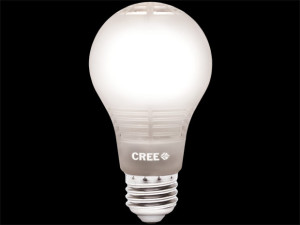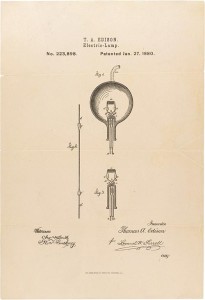
Thermal management represents about 25-30 percent of total costs in a LED bulb, second only to the LEDs themselves.
Credit: Cree
LED maker Cree has introduced a new consumer bulb that costs less, lasts longer, and consumes less energy than the traditional bulb.
The company’s new bulb does not use the heats sinks that LED bulbs typically use. An LED bulb’s metal collar or other heat sink serves to draw away heat from the bulb to ensure a long life. Accordingly, this makes the bulb more expensive and give it a bulky look.
By eliminating the heat sink, Cree lowered the bulb cost from $9.97 for a “soft white” 40-watt to $7.97.
This from IEE Spectrum:
In its new design, heat is removed from the LEDs through convection, or a flow of air through the bulb. The LEDs are mounted on circuit boards, rather than the metal tower. As the diodes heat up, they draw air from outside the bulb through small vent-like openings at the base and on the top. Because hot air rises, air flows continually through the bulb to cool the LEDs. The airflow circulates whether the bulb is vertical, horizontal or upside down, Watson says.
Read the full article here.
The new generation bulb will last 25,000 hours and consume 85 percent less energy than an incandescent bulb.
Want to know what the future has in store for LEDs? Check out what our scientists have been researching to propel this technology. While you’re over there, sign up for our e-Alerts so you are up-to-date on what is happening in the world of electrochemical and solid state science and technology.



